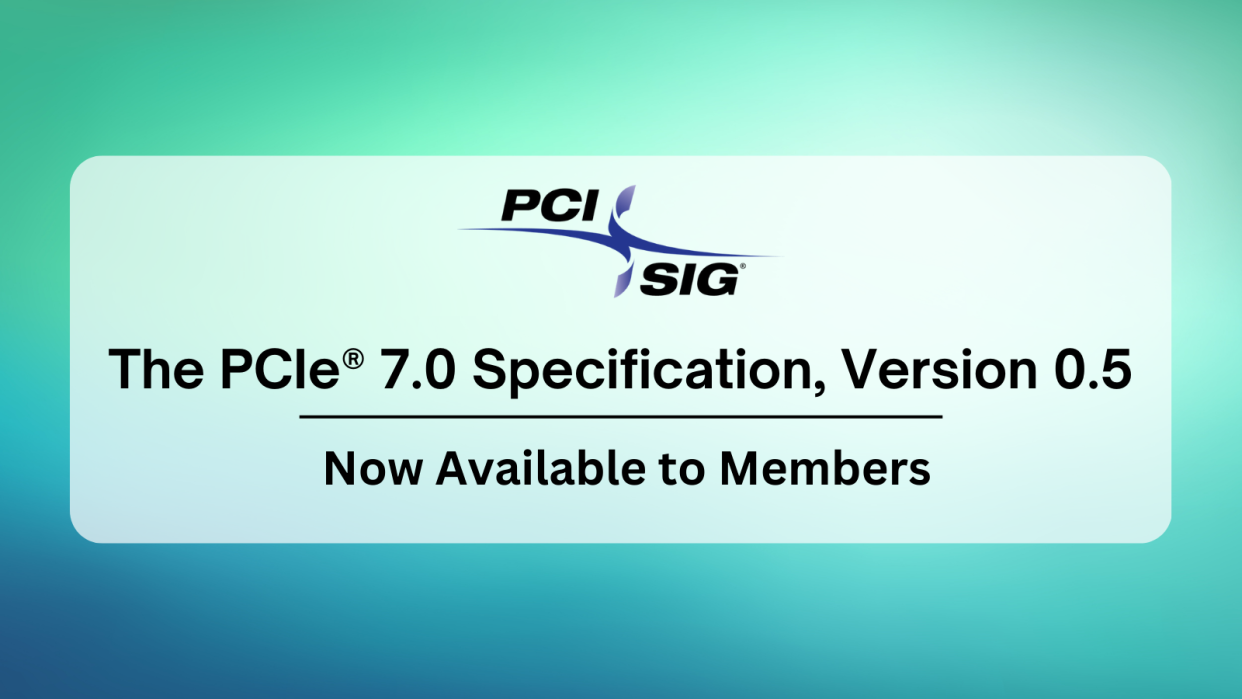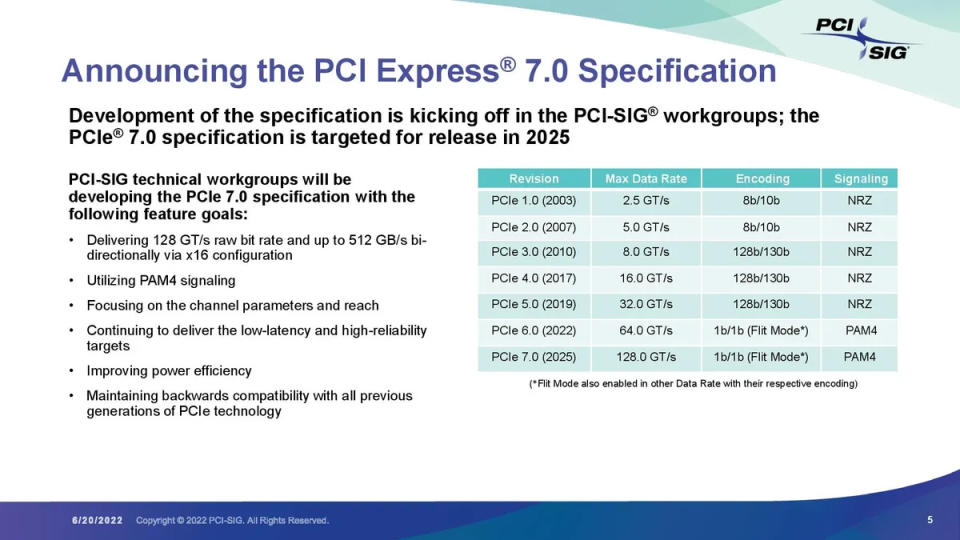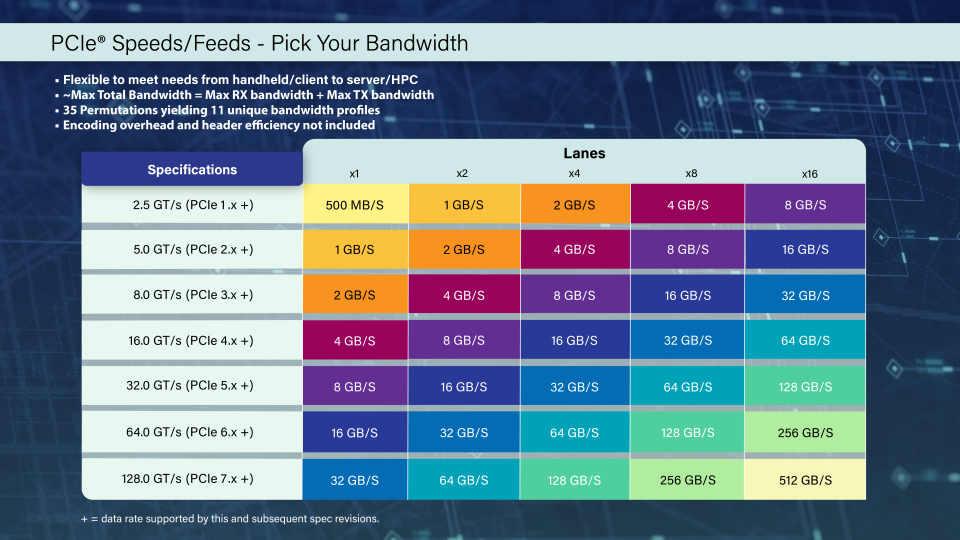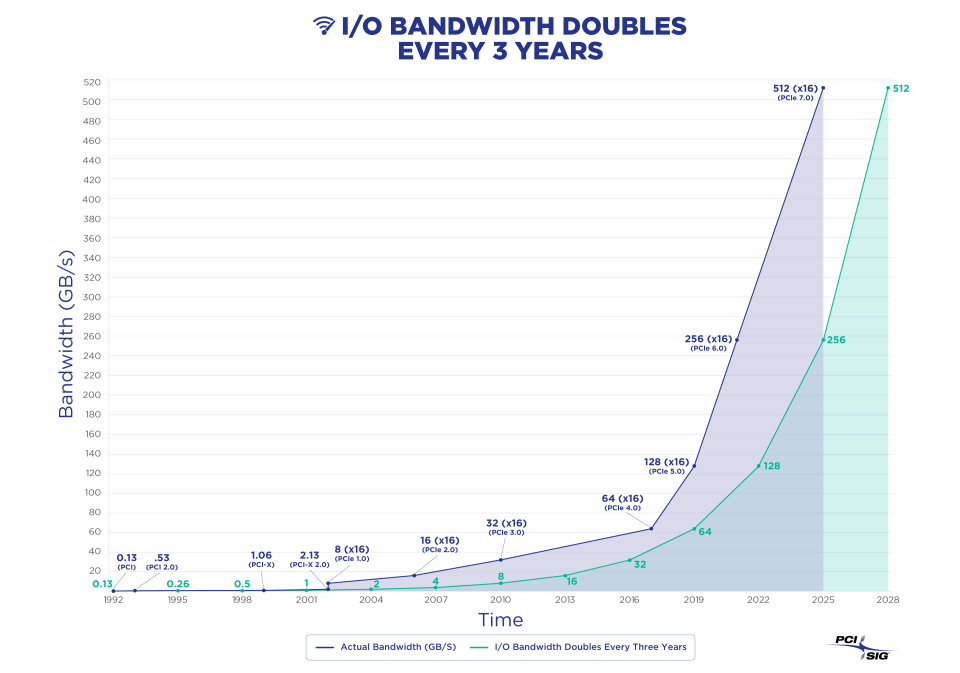Full draft of PCIe Gen 7 spec is now available — on track for full release in 2025

The PCI Special Interest Group (PCI SIG) has published the first official draft of the PCIe Gen 7.0 specification for its members to review. The draft includes all the specifications changes Gen 7 will receive over PCI Gen 6 so its members can make changes if needed. The new PCI Express revision is still on track for a full release in 2025.
Gen 7 is the next revision of PCI Express after Gen 6. If you thought Gen 6 was already super fast, Gen 7 will double the bandwidth of Gen 6, featuring data rates of up to 128 GT/s. That means a PCIe Gen 7 x16 slot can transfer a whopping 512GB/s bi-directionally from a CPU to a Gen 7-supported add-in card, and vice versa.
Despite having an enormous bandwidth uplift over its predecessor, Gen 7 utilizes some features that Gen 6 already uses today, including PAM4 signaling and 1b/1b flit mode encoding. This makes Gen 7's architectural design surprisingly similar to Gen 6's, which could potentially accelerate adoption from manufacturers already experienced in Gen 6 deployment.



The move from PCIe 4.0 to 5.0 doubled data transfer rates by increasing the bus frequency, which then imposed new restrictions like a roughly halved trace length. That meant devices had to be placed closer together to maintain signal integrity, along with adding requirements for thicker motherboards and more robust materials.
The new PCIe 6.0 interface doubles throughput once again, but the increase comes via a switch to PAM-4 encoding from NRZ instead of a frequency increase, so reach/distance requirements remain roughly the same. However, PAM-4 encoding is more susceptible to errors, so error rates have increased despite the addition of forward error correction (FEC). While bandwidth has doubled, error rates have also increased, thus chewing into the effective bandwidth. Retimers can help address those issues, but also add cost.
We won't see PCIe Gen 7 for a long time, even after its 2025 debut. These bleeding-edge technologies generally take a few years before becoming mainstream in the consumer market. As a result, Gen 7 will be largely restricted to the enterprise/server market at first, where it will be used extensively.

